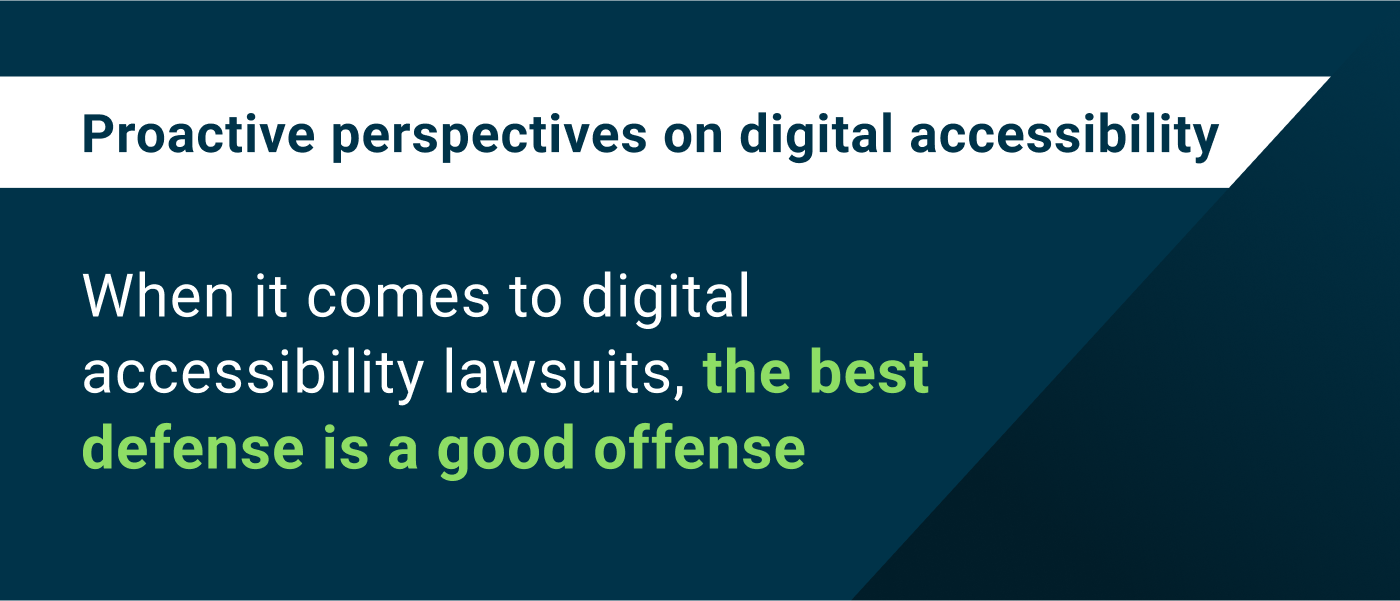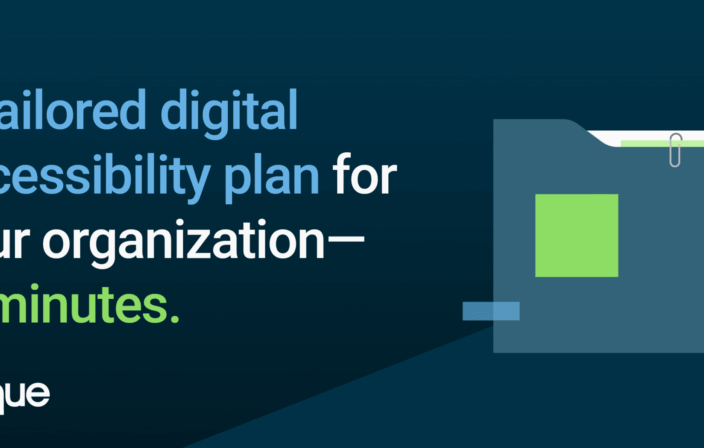Let me start by saying that I love my job. Why? Because I spend every week talking to our customers about digital accessibility. It’s my passion, and I love sharing my perspectives and experience with people who are working to build digital accessibility programs at their companies. I help them identify their challenges and opportunities, and I work with them to set and achieve their digital accessibility goals.
Over the past couple of weeks, I’ve had at least three customer conversations that were triggered by an article in the Wall Street Journal titled The Law Firm Hitting Businesses With Thousands of Disability Suits.
If you have a Wall Street Journal subscription, you can review the article yourself. But if not, what I can tell you is that it’s very understandable why any business owner who reads it would feel concerned. One single law firm alone filed more than 1,000 digital accessibility cases in the US just last year!
When you examine these lawsuits, it’s very clear that there’s a kind of “cut and paste” approach being used, with the goal being to file as many lawsuits as possible in hopes of securing quick financial settlements.
While many digital accessibility lawsuits can be well-intentioned, the kinds of actions described in this article are not helpful. They’re not making the web more accessible and inclusive to all, which is what really matters. And they’re actually wasting money that could be spent on improving digital content.
I’m particularly troubled by the possibility that lawsuits of this kind could come to be perceived as a “necessary evil.” If a lawsuit is demanding a quick financial settlement, companies may look at the situation and think that it will ultimately be cheaper to settle the lawsuit than to put in the work to make their content accessible.
This is problematic for many reasons, the main one being that it’s not true!
I conducted a study several years ago, looking at Fortune 50 companies that had been through a digital accessibility lawsuit process. My goal was to examine in minute detail the level of effort and cost it took to handle one of these predatory lawsuits, with a particular focus on those lawsuits that were settled quickly for a fairly low amount.
I expected there to be hidden costs that would add up, but even so, I was still surprised by the results.
When we calculated the final total costs that the average company spent on all the actions required upon receiving a lawsuit—which included securing external counsel who were experts in the digital accessibility field and licensed—we found totals of up to $350,000 or more!
(You can learn more about the results of this study in this Deque webinar: The Real Cost of Accessibility Complaints and Lawsuits)
One of the examples cited in the Wall Street Journal article involves a lawsuit filed against a small electric bike company. The proposed settlement was for $4,950. But to get to that negotiated number, the electric bike company had to pay approximately $46,000 in legal fees! That’s more than double the cost of simply fixing the content in question. Updating their websites only cost $13,000.
When I read this, it all felt very familiar. Over the years, I’ve collected so many similar stories where the legal fees and administrative costs were exponentially higher than the settlements themselves. The notion that settling will save money is a fallacy, and so is the notion that getting and staying accessible now will be more expensive than dealing with any legal issues later.
As the Wall Street Journal article makes clear, lawsuits aren’t going away. In fact, they’re becoming more and more common. Some companies even get targeted more than once. Continuing to pay out to try and settle just isn’t feasible. Your company will always be on the defensive and always paying out more than it needs to.
Fortunately, there’s a better way.
The best defense is a good offense. Don’t wait to get sued, and then sued again. Don’t pay out more than you have to as you defend your organization against predatory lawsuits that impose high hidden costs under the guise of quick settlements. Instead, invest in digital accessibility now and avoid future lawsuits altogether. You’ll pay less overall, and the benefits to your company will last for the long term. Plus, you’ll be doing the right thing by making your content more inclusive and accessible to all, which is the real goal!




